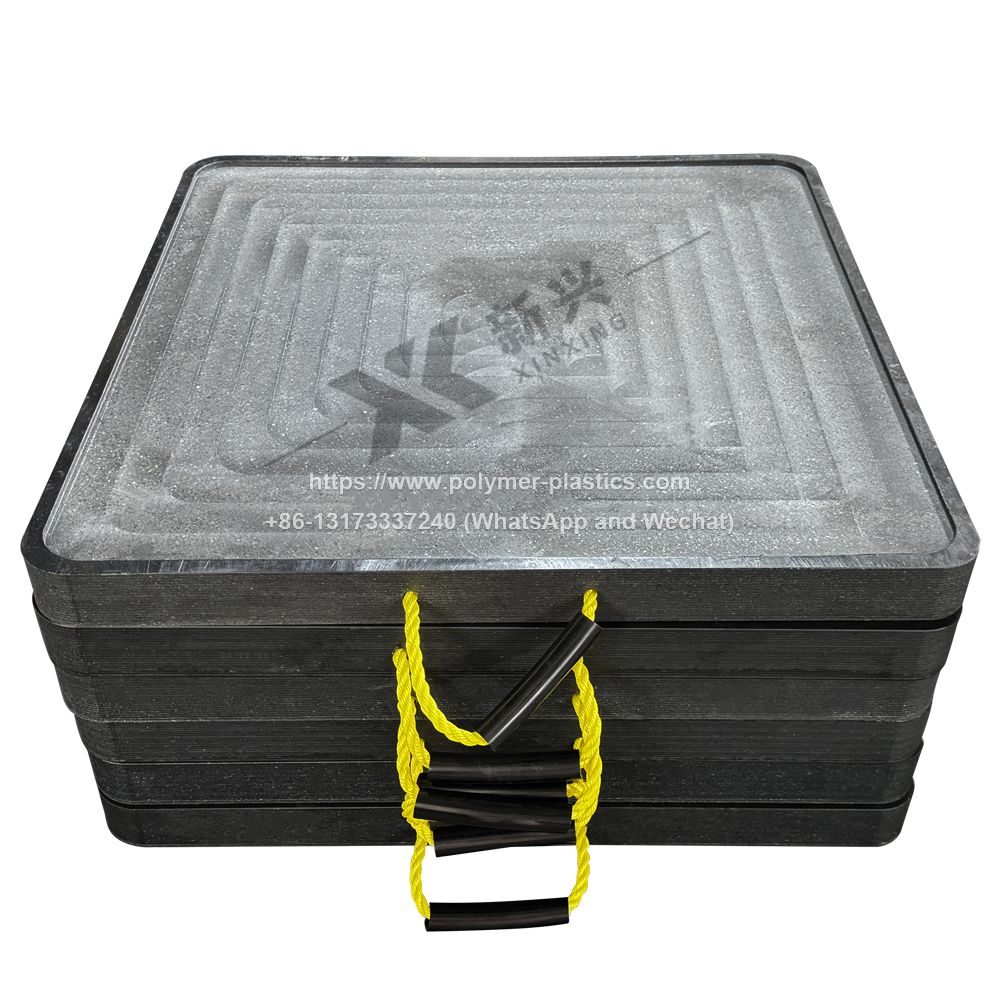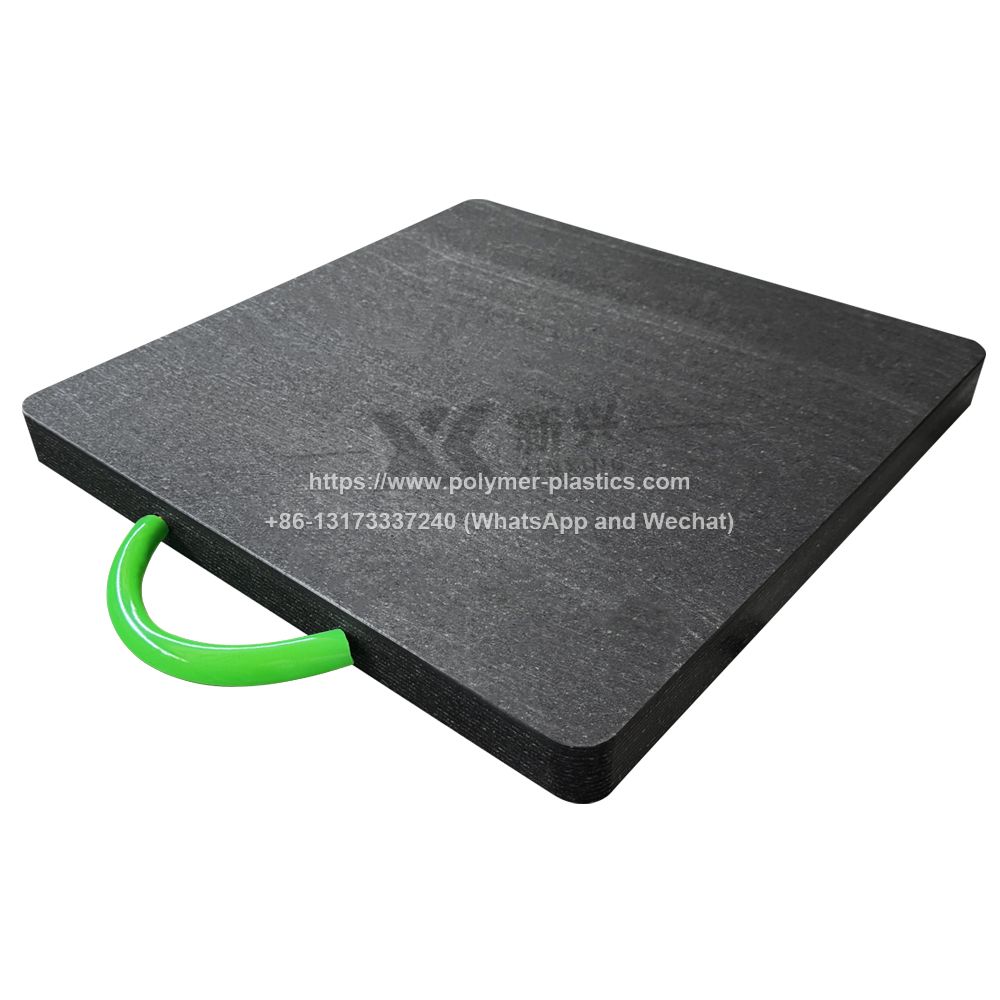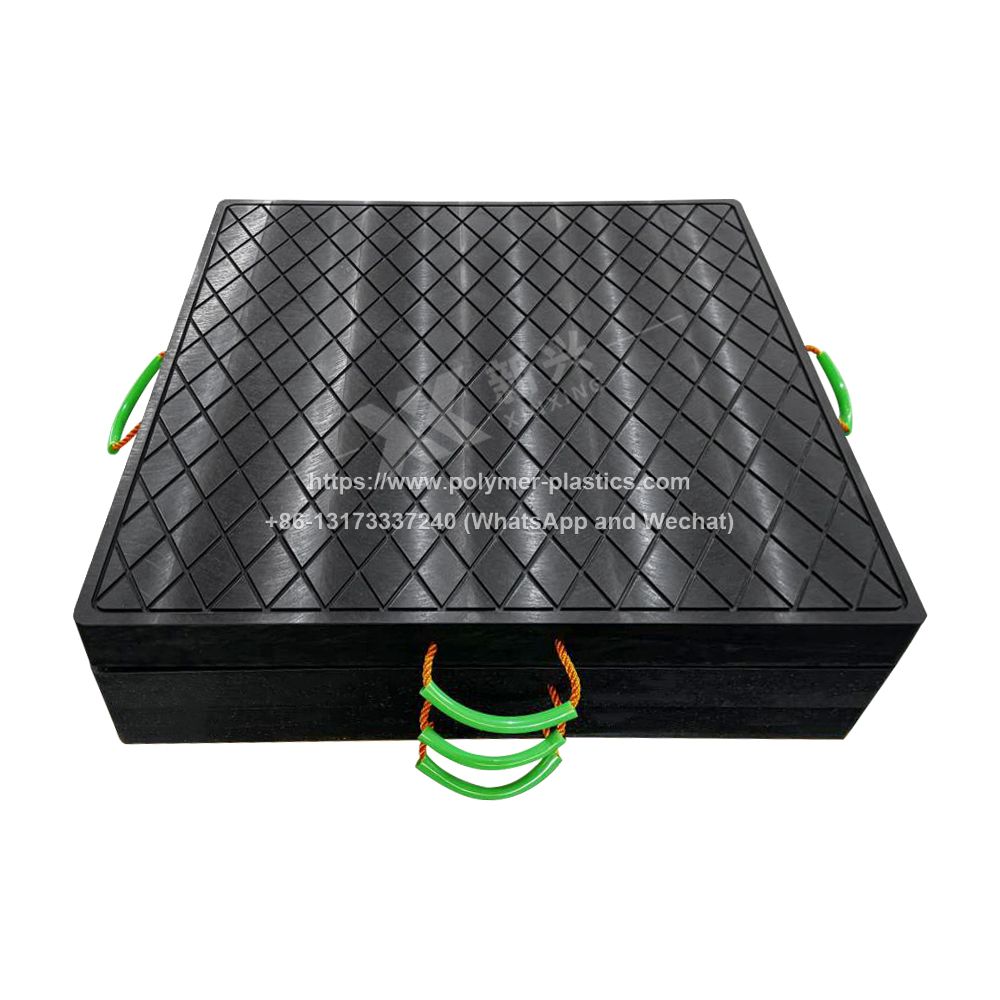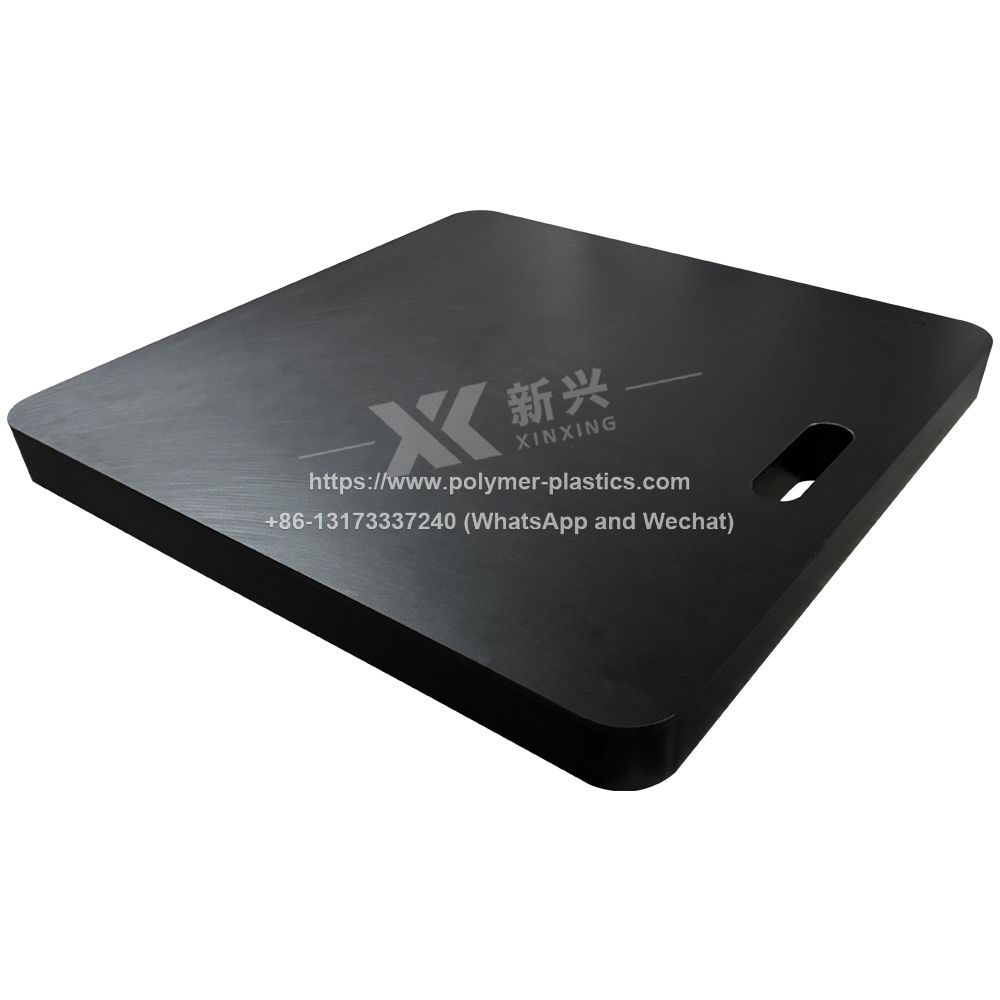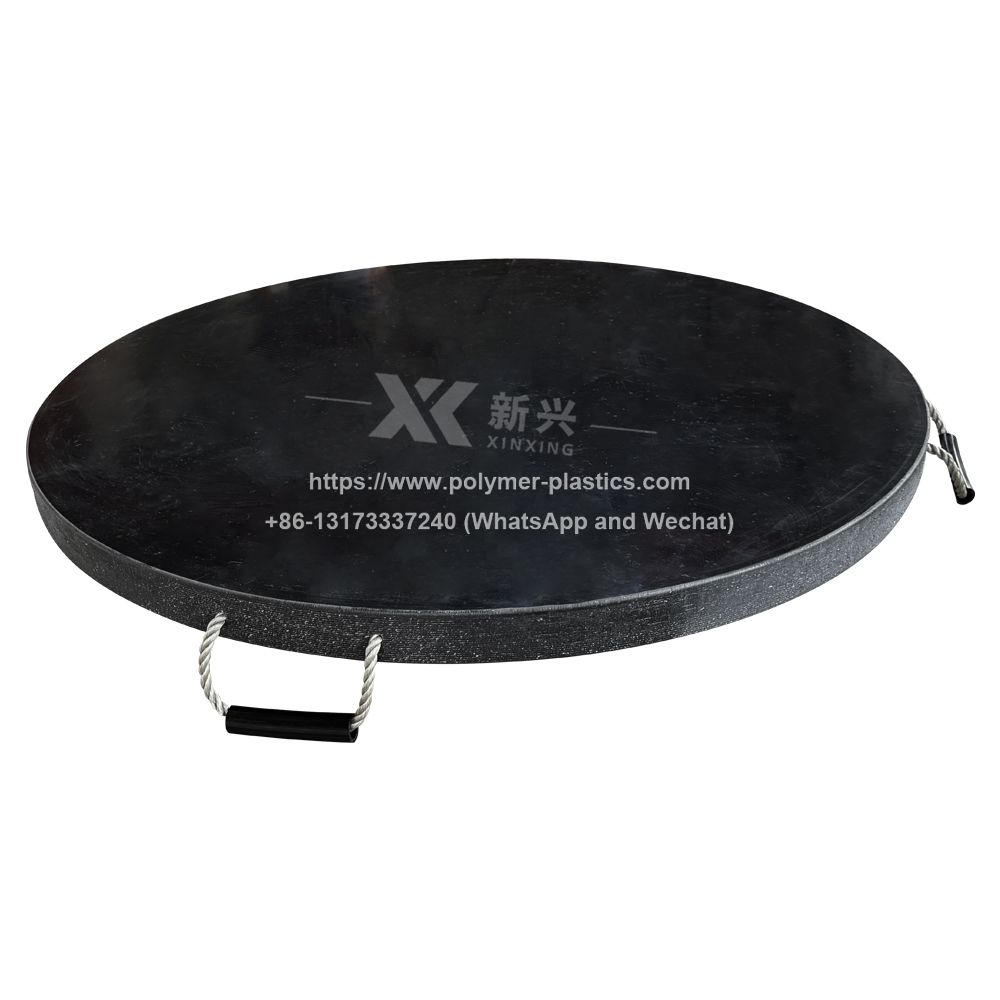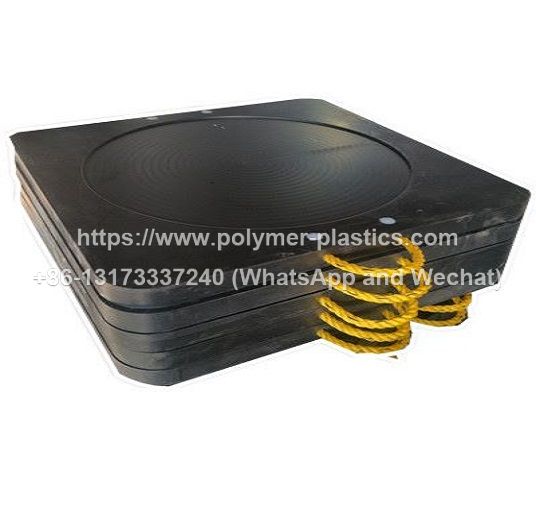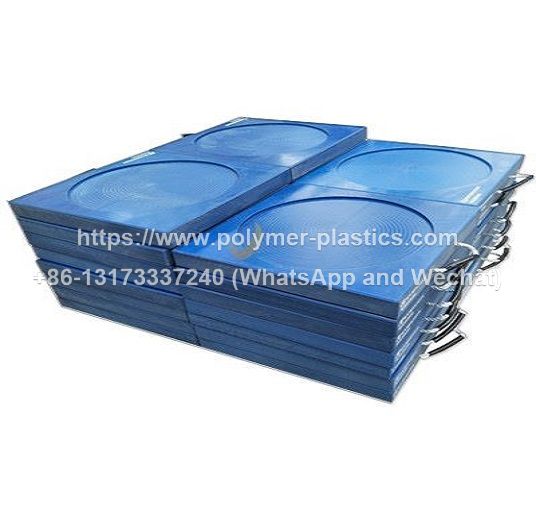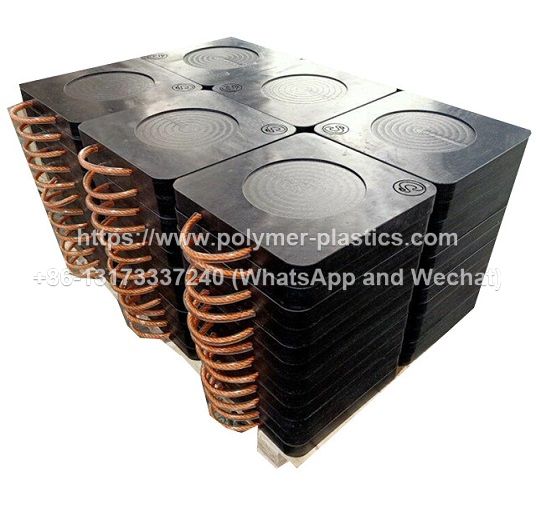Four-corner support of outrigger pad can be used under harsh environment, but not broken. The hand-held rope is made of nylon material, and the end of the hand-held rope is embedded in the base plate body for convenient transportation and arrangement. The process composite uhmwpe leg pad is processed by numerical control machine in the later stage of press molding.
Plastic Crane Stabilizer Pads Features:
1.Ultra-high molecular weight polyethylene sheet has extremely high impact strength, which is 10 times larger than nylon and polypropylene (PP).
2. The wear resistance of ultra-high molecular weight polyethylene sheet is very excellent. The sand slurry wear test shows that it is several times more wear-resistant than other metals like carbon steel and copper, and 4-5 times more wear-resistant than nylon and PTFE, ranking first among existing plastics.
3. The friction coefficient of ultra-high molecular weight polyethylene liner is very low. Its dynamic friction coefficient is 0.07 ~ 0.10.
4. High polymer polyethylene sheet can absorb shock and prevent noise.
5. Plastic crane outrigger pads is resistant to chemical corrosion, and can shield atomic radiation. In a certain range of temperature, concentration of many corrosive media (acid, alkali, salt) and organic solvents and other various corrosive media have no alternative to it.
6. Ultra-high molecular polyethylene crane pads is not easy to adhere to foreign matters, and has excellent anti-adhesion properties when sliding.
7. Tasteless, non-toxic, odorless, pollution-free, non-corrosive crane pad colors, which are allowed by the food and drug administration (FDA) and the USDA to be used for direct contact with food and drugs, thus applicable to industries with higher requirements on hygiene conditions such as food and medicine. Can be recycled in the cycle and other plastic compared with good thermal stability and no water imbibition plastic plate, crane products in damp environment, also won’t because of water absorption and make the size change, also does not affect the product precision and wear resistance and mechanical properties, and raw materials do not need to be dry prior to forming processing.
8. The working temperature range from 265 ℃ to + 265 ℃, low temperature to – 195 ℃ can still maintain good toughness and strength, not brittle.

